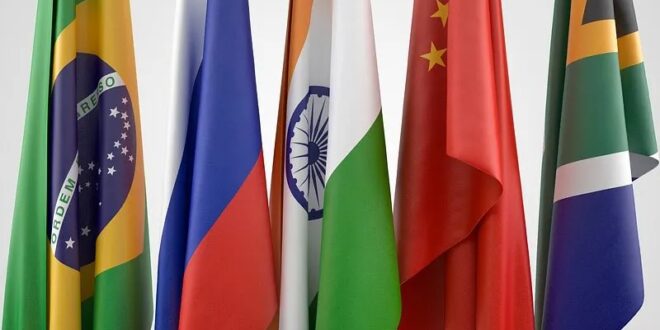When the inaugural BRIC summit took place in 2009, it was a moment of relative triumph for its members. While the West dealt with the worst financial crisis since the Great Depression, BRIC countries — Brazil, Russia, India and China — enjoyed temporary shelter from the turmoil. When South Africa joined the bloc in 2010, the BRICS agenda expanded beyond economic cooperation and now includes a wide array of global governance issues, including security.
The BRICS will likely hold their 14th summit in June 2022 under China’s chairpersonship. It is expected to be the third virtual BRICS summit as China sticks with its zero-COVID policy.
The world is dramatically different to the one in which BRICS leaders last met in Brasilia in 2019. Neither China nor Russia, the two key pillars of the bloc, are growing as fast as they were then. Compared to 13 years ago, China–India territorial disputes have escalated via the Ladakh skirmishes of 2020. The far-right Brazilian President Jair Bolsonaro’s anti-China rhetoric has provoked the Chinese government to go on a diplomatic offensive. The COVID-19 pandemic, subsequent economic shock and the global supply chain reconfiguration have exacerbated the group’s divergent interests.
But the BRICS are not necessarily losing momentum as a political bloc. If anything, this upcoming summit will be a testament to BRICS solidarity. If held, it will be convened at a time when a key member is waging war against another sovereign state and is under severe punitive sanctions imposed by the West. In early March 2022, India, China and South Africa all abstained from a UN General Assembly resolution condemning Russia’s invasion of Ukraine. Brazil voted to condemn Russia, but it criticised the ‘indiscriminate’ sanctions imposed by the West.
Like it or not, the BRICS as a global governance architecture representing the Global South is here to stay with an expanded policy agenda. The BRICS may even try to entrench their unique role by developing an alternative global financial system that is not based on the US dollar.
Russia has been preparing to deal with the consequences of Western sanctions since it annexed Crimea in 2014. It has launched two critical pieces of financial infrastructure to increase its financial autonomy and maintain some access to global liquidity under sanctions. One is an independent national payment system featuring MIR cards as an alternative to Visa and Mastercard. The other is a proprietary financial messaging system called the ‘System for Transfer of Financial Messages’ (SPFS) — the Russian analogue to SWIFT.
Within the BRICS bloc, Russia has already developed financial architecture to achieve de-dollarisation in collaboration with China and India. After Russia was cut off from the dollar-based global financial system and half its foreign exchange reserves were frozen by the West, Russia called on its BRICS partners to extend the use of national currencies and integrate BRICS payment systems in April 2022.
An integrated BRICS alternative financial system is not completely unfathomable. It could be achieved through the connection and extension of the proprietary national payment systems developed by China and Russia. The BRICS could alternatively advance their proposed BRICS Pay system — part of their attempt to establish a common payment system between members.
In 2020, the Russian BRICS Presidency proposed the idea of an expanded commercial ‘BRICS Pay’ system for ‘BRICS+’, a broader grouping of developing countries proposed by China on the sidelines of the BRICS Xiamen Summit in 2017. The concept could incorporate other regional institutions — the Shanghai Cooperation Organisation (SCO), Eurasian Economic Union, South African Customs Union, South Asian Association for Regional Cooperation and Mercosur — into a wider BRICS dialogue.
The synergies between the BRICS and the SCO are particularly salient. Three of the five BRICS members are SCO members and the SCO has been looking into economic and financial cooperation since 2006. Members of the SCO have also considered establishing an SCO Development Bank and an SCO Development Fund mirroring the BRICS’ New Development Bank (NDB).
Established in 2014, the NDB actively promotes the use of local currency in development finance. In 2021, the NDB welcomed its first four non-BRICS members — Bangladesh, Egypt, the UAE and Uruguay. Through the expansion of membership and the provision of local currency lending to members, the NDB is en route to becoming the premier multilateral development finance institution led by the Global South, for the Global South.
BRICS gatherings were initially held alongside G20 meetings, but they have set their own pace and pursued a growing agenda over the past 13 years. With US President Joe Biden declaring that Russia should be removed from the G20, the G20 may never regain its status as the world’s preeminent intergovernmental forum. BRICS members may have reiterated their support for the G20’s global economic leadership in their recent Joint Statement — but the BRICS grouping has already grown out of the shadow of the G20.
There remain concerns over the credibility of India as a committed BRICS member given its membership of the Quad and participation in the Indo-Pacific Economic Framework for Prosperity (IPEF). But India’s foreign policy pivot from non-alignment to multi-alignment suggests that India will not abandon the BRICS.
The good thing about the BRICS being a heterogeneous group is that its members have learned how to seek common ground despite having divergent interests. The BRICS have never had any internal coherence, so there is little worry of losing it.
 Eurasia Press & News
Eurasia Press & News



